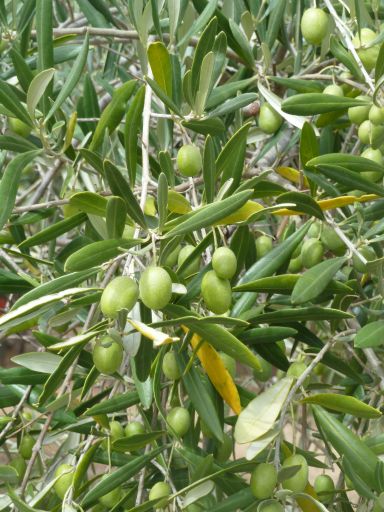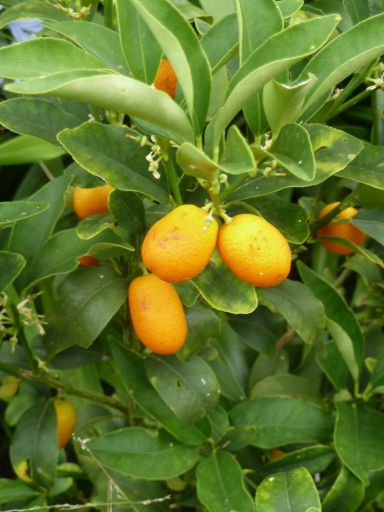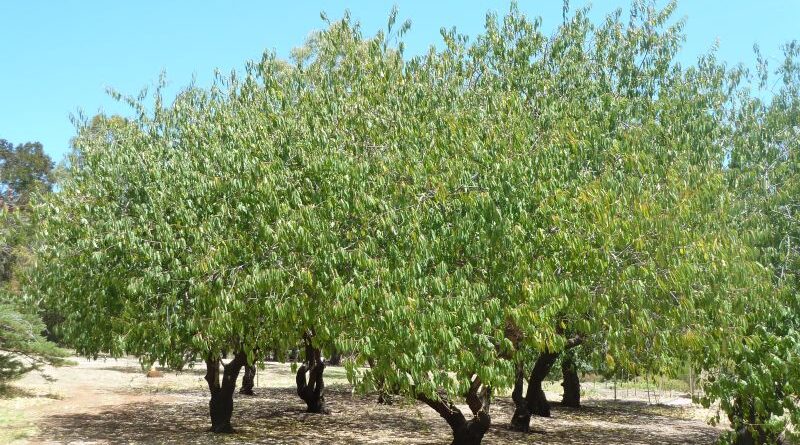Micro-sprinkler techniques for fruit trees By Dr Terry Mabbett
Micro-irrigation is defined as the application of water to less than 100 per cent of a crop area. Micro-irrigation covers both drip/trickle and micro-sprinkler/micro-jet irrigation systems. Each possesses advantages and disadvantages and may be modified and adapted to different crops, soil types and climatic conditions. As a general rule of thumb drip irrigation systems have found widest application in row crop vegetables and bush/vine crops while micro-sprinklers have proved most popular in fruit tree crop orchards and groves.
Micro-sprinklers for tree crops
Micro-sprinkler irrigation systems are designed to deliver and distribute water as a fine rain-like shower of drops. Water is generally transported to and into the field through a network of tubes. It is subsequently applied to the crop using a series of micro-sprinkler devices to achieve localised but highly efficient and effective irrigation. The main difference between delivery by a micro-sprinkler and a micro-jet is that with the former the water jet rotates while in the latter it is static. Micro-sprinkling has usually been used purely for application of water to crops, but being adaptable and multi-purpose it has been quite widely used for fertigation and chemigation, frost protection in orchards and evaporative cooling in greenhouses.
Water requirements for a micro-sprinkler system are usually determined by the evaporation rate from the crop and/or soil or by measurements of soil water content. Early tests showed that efficiency of micro-sprinklers at between 94 to 97 per cent were higher than for any other method of irrigation under use. This ultra high efficiency was attributed to uniform wetting of the irrigated area and to the correctness and exactness of the amounts of water that were being applied.
Use of micro-sprinklers means the amount of water needed by the plants is applied to a set volume of soil. This strategy allows the root system to develop evenly and spread densely throughout the entire volume of soil that has been wetted. Thus if micro-sprinklers are the main means of water application throughout the year trees are assured of a continuous and adequate supply of water and nutrients.

This is in complete contrast to orchards and groves where tree crops are predominantly rain fed and only need irrigation for relatively short but critical periods of time during the dry season. In this situation the tree’s root system develops according to the natural rainfall. Only the micro-sprinkler with its modular design and wide range of options is capable of supplying the required quantity of water and nutrients accurately and efficiently to the already developed root system during this critical dry season period.
The uniform rate of irrigation provided by micro-sprinkling means it is relatively easy to calculate the amount of water required by each tree. With the low irrigation volume applied there is no problem with water ‘runoff’ or water ‘ponding’ on the surface of the soil and irrigation rate is easily matched to soil type and climatic conditions. And through application of optimum amounts of water there will not be any seepage out beyond the root zone nor problems of aeration within the root zone caused by water-logging of the soil. Furthermore, uniform wetting of the soil through using micro-sprinklers makes for easier use and application of soil monitoring equipment and instruments.
The pattern of root distribution is a close and complete reflection of the distribution of water in the soil and numerous field trials comparing micro-sprinkling and other methods of irrigation (including classical drip irrigation) in orchard tree crops show distinct differences in pattern of root distribution.
In the micro-sprinkler treatment the roots are evenly distributed in the area/volume of wetted soil and grow to a depth of some 80 cm, as well as being far greater in number. On the other hand roots in classical drip irrigated treatments are concentrated in a relatively shallow and small volume of soil beneath the dripper. Furthermore micro-sprinkling produces a superior tree canopy/root system relationship that is much better balanced.
Only some 40 to 80 per cent of soil surface area is wetted with micro-sprinklers in mature orchards but may be adjusted according to the pattern and extent of root development without incurring any extra costs. In addition the shape of the wetted surface area may be altered from a full circle to a half circle or strip shape. A small full circle (progressively enlarged) is commonly used for small young trees as they grow and develop.

The actual sprinklers are connected to the lateral via a flexible tube thus allowing underground installation of the distribution pipes. This assists in prevention of damage typically caused by birds and rodents. Each micro-sprinkler unit may be equipped with a flow regulating device to ensure an even rate of water supply to each tree irrespective of any differences caused by water head pressure or ‘lay of the land’.
Visual inspection of micro-sprinkler irrigation systems is easy and rapid taking considerably less time than for inspection of several emitters at every tree for the typical drip irrigation system. The considerably larger mesh filter employed in micro-sprinklers allows longer operating times before filter cleaning is required.
Micro-sprinklers are particularly appropriate for marginal lands and saline water resources for which they outperform other irrigation systems, often by as much as a third. Salinity is a key factor and one of the main aims of any irrigation system is to avoid the accumulation of salinity related salts in the root zone of the tree. And this becomes overriding in importance when farmers are forced to use brackish or saline water for irrigation.
Saline water and soil cause damage to the root system which in turn negatively affects transpiration rate, photosynthetic efficiency and therefore crop yield and fruit quality. Experiments that have used saline water (E.C. 2.8 mmhos) supply show level of salinity in the root zone is less under micro-sprinklers than drippers. It is much better to control salinity of the soil by periodical flushing with water than by continuous irrigation with large volumes of water, which will invariably lead to soil aeration problems in the longer term.
Use of micro-sprinklers additionally allows introduction of fertilizers into the system and application by what is commonly known as fertigation. Not only does this provide more measured nutrient application targeted at different and changing seasonal and crop developmental requirements (economising on fertilizer), but also reduces overall labour requirement. Even nutrients with comparatively low soil mobility are suitable for application through micro-sprinklers.
The End

